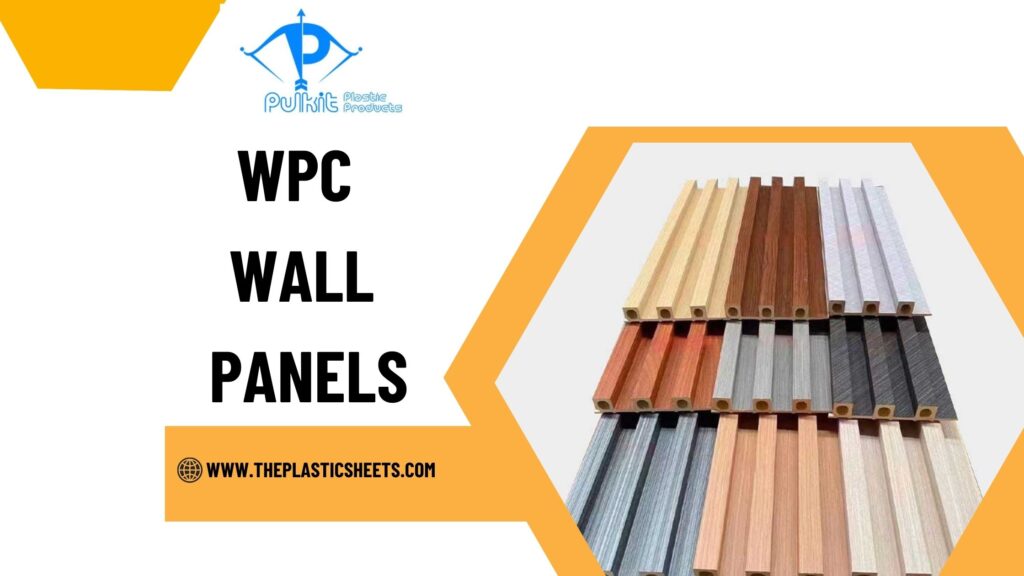
In recent years, the demand for innovative and sustainable building materials has surged, particularly in interior architecture. One such material that has gained significant popularity is Wood Plastic Composite (WPC) wall panels. Combining the aesthetics of wood with the durability of plastic, WPC wall panels offer a versatile solution for various interior applications. In this article, we will explore the numerous benefits and applications of WPC wall panels, their pricing, and why they have become a staple in modern interior design.
What are WPC Wall Panels?
WPC wall panels are engineered materials made from a blend of wood fibers and plastic composites. This unique combination results in a product that retains the natural appearance of wood while offering enhanced durability, moisture resistance, and ease of maintenance. WPC wall paneling is available in various colors, textures, and finishes, making it suitable for diverse design themes.
Key Features of WPC Wall Panels
- Durability: WPC panels are resistant to moisture, termites, and decay, making them ideal for environments where traditional wood may fail.
- Aesthetic Appeal: WPC wall panels can mimic the look and feel of natural wood, providing a warm and inviting atmosphere without the associated maintenance.
- Sustainability: As a composite material, WPC utilizes recycled wood and plastic, contributing to environmental sustainability.
- Lightweight: Compared to traditional wood panels, WPC panels are lighter, making them easier to handle and install.
- Easy Installation: WPC wall panels can be installed using standard tools, allowing for quick and efficient application.
Applications of WPC Wall Panels
1. Residential Interiors
WPC Wall Paneling is increasingly used in residential settings for various applications, including living rooms, bedrooms, and kitchens. They can be used as accent walls, creating a focal point in a room, or for full wall installations that add texture and warmth.
2. Commercial Spaces
In commercial interiors, WPC panels are often employed in offices, hotels, and retail environments. Their durability makes them suitable for high-traffic areas, while their aesthetic appeal can enhance the overall brand image.
3. Hospitality Industry
Hotels and restaurants frequently use WPC wall panels to create inviting environments. The material can be customized to reflect the theme of the establishment, whether modern, rustic, or traditional.
4. Healthcare Facilities
WPC panels are an excellent choice for healthcare settings due to their hygienic properties. They are easy to clean and maintain, making them ideal for hospitals and clinics where cleanliness is paramount.
5. Educational Institutions
Schools and universities are increasingly incorporating WPC wall panels into their designs. The versatility of the material allows for creative classroom environments, hallways, and communal spaces.
Benefits of Using WPC Wall Panels
1. Cost-Effective Solution
While the WPC Wall Panel Price may vary based on factors like design and finish, it generally remains competitive compared to traditional wood and other materials. Their durability means lower maintenance and replacement costs over time.
2. Low Maintenance
WPC wall panels require minimal upkeep. They are resistant to stains and scratches, and routine cleaning with soap and water is often sufficient to maintain their appearance.
3. Eco-Friendly
WPC is made from recycled materials, making it a sustainable choice for environmentally conscious consumers. The production of WPC panels also involves lower emissions compared to traditional wood products.
4. Versatile Design Options
Available in various colors, patterns, and finishes, WPC panels can easily complement any interior design scheme. From sleek modern aesthetics to rustic charm, WPC wall panels can adapt to the vision of any architect or designer.
5. Enhanced Insulation
WPC panels can provide additional insulation, helping to regulate indoor temperatures and improve energy efficiency.
Pricing Considerations
When exploring WPC Panels Price, several factors come into play, including:
- Thickness and Size: Thicker and larger panels generally cost more due to the additional materials used.
- Design Complexity: Custom designs, textures, and finishes may influence the price.
- Brand: Different manufacturers, including Pulkit Plastic Products, may have varying pricing based on quality and features.
- Quantity: Bulk purchases often come with discounts, making it more economical for larger projects.
As a general guideline, WPC wall panels can range from moderate to high prices, but their long-term benefits often justify the investment.
Installation Process
The installation of WPC wall panels is relatively straightforward. Here’s a basic overview of the process:
- Preparation: Ensure that the wall surface is clean, dry, and free from any debris. Measure and cut the panels to fit the desired area.
- Layout: Plan the layout to minimize waste and ensure a balanced appearance. Mark guidelines on the wall for accurate placement.
- Adhesive Application: Use a suitable adhesive for WPC materials, applying it evenly on the back of the panels.
- Panel Installation: Press the panels against the wall, ensuring they align with the marked guidelines. Use spacers if necessary to maintain even gaps.
- Finishing Touches: After installation, apply trim or moldings as needed to complete the look and ensure a polished finish.
Conclusion
WPC wall panels represent a significant advancement in interior architecture, offering a versatile, durable, and aesthetically pleasing option for various applications. Whether for residential, commercial, or industrial use, WPC panels provide numerous benefits, including sustainability, low maintenance, and cost-effectiveness. As the demand for innovative materials continues to grow, WPC wall paneling stands out as a top choice for modern interior design, making it easier than ever to achieve beautiful, functional spaces. Yes, many manufacturers, including Pulkit Plastic Products, offer customization options for colors, designs, and finishes.
FAQs About WPC Wall Panels
1. What is WPC wall paneling made of?
WPC wall paneling is made from a blend of wood fibers and plastic composites, combining the benefits of both materials.
2. Are WPC wall panels durable?
Yes, WPC wall panels are highly durable, resistant to moisture, termites, and decay, making them suitable for various environments.
3. What is the average price of WPC wall panels?
The WPC wall panel price varies based on size, thickness, and design, but they are generally cost-effective compared to traditional materials.
4. How do I maintain WPC wall panels?
WPC panels require minimal maintenance; regular cleaning with soap and water is usually sufficient to keep them looking good.







